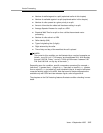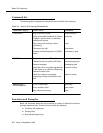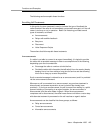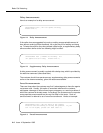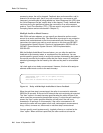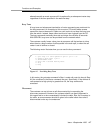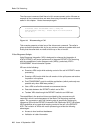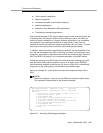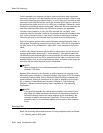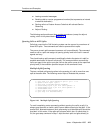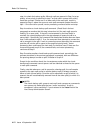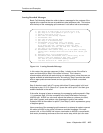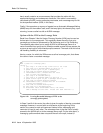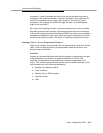
Basic Call Vectoring
4-8 Issue 4 September 1995
The
disconnect
command itself has a built-in announcement option. We saw an
example of the command when we were discussing information announcements
earlier in this chapter. Here’s the example again:
Figure 4-8. Disconnecting a Call
This example presents an ideal use of the
disconnect
command. The caller is
given recorded information that, by its very content, resolves a problem with such
finality that the caller feels no need to follow up on his or her call.
Voice Response Scripts
Voice Response Integration (VRI) is designed to enhance the integration of
AT&T’s DEFINITY call center systems and to integrate DEFINITY Call Vectoring
with the capabilities of voice response units (VRUs), particularly AT&T’s
CONVERSANT Voice Information System.
VRI can do the following:
■ Execute a VRU script while retaining control of the call in DEFINITY vector
processing.
■ Execute a VRU script while the call remains in the split queue and retains
its position in the queue.
■ Pool CONVERSANT ports for multiple applications (which previously was
possible only when ASAI was present.)
■ Use a VRU as a flexible external announcement device.
■ Pass data between the DEFINITY switch and a VRU.
■ Tandem VRU data through the DEFINITY switch to an ASAI host.
The capabilities in the previous list are provided by the
converse-on split
command, which is an enhancement to the Basic Call Vectoring customer
option. The
converse-on split
Call Vectoring step is specifically designed to
integrate a VRU with the DEFINITY Automatic Call Distribution (ACD). VRI allows
VRU capabilities to be used while keeping control of the call in the DEFINITY
ACD. The inclusion of VRUs with vector processing provides the following
advantages:
■ Access to local and host databases.
■ Validation of caller information.
disconnect after announcement 2918 (‘‘Today has
been declared a snow day. Please report for work tomorrow
at 8 P.M.’’)



